Deborah A. Kerr
Evaluating Large Multimodal Models for Nutrition Analysis: A Benchmark Enriched with Contextual Metadata
Jul 09, 2025



Abstract:Large Multimodal Models (LMMs) are increasingly applied to meal images for nutrition analysis. However, existing work primarily evaluates proprietary models, such as GPT-4. This leaves the broad range of LLMs underexplored. Additionally, the influence of integrating contextual metadata and its interaction with various reasoning modifiers remains largely uncharted. This work investigates how interpreting contextual metadata derived from GPS coordinates (converted to location/venue type), timestamps (transformed into meal/day type), and the food items present can enhance LMM performance in estimating key nutritional values. These values include calories, macronutrients (protein, carbohydrates, fat), and portion sizes. We also introduce ACETADA, a new food-image dataset slated for public release. This open dataset provides nutrition information verified by the dietitian and serves as the foundation for our analysis. Our evaluation across eight LMMs (four open-weight and four closed-weight) first establishes the benefit of contextual metadata integration over straightforward prompting with images alone. We then demonstrate how this incorporation of contextual information enhances the efficacy of reasoning modifiers, such as Chain-of-Thought, Multimodal Chain-of-Thought, Scale Hint, Few-Shot, and Expert Persona. Empirical results show that integrating metadata intelligently, when applied through straightforward prompting strategies, can significantly reduce the Mean Absolute Error (MAE) and Mean Absolute Percentage Error (MAPE) in predicted nutritional values. This work highlights the potential of context-aware LMMs for improved nutrition analysis.
Saliency-Aware Class-Agnostic Food Image Segmentation
Feb 13, 2021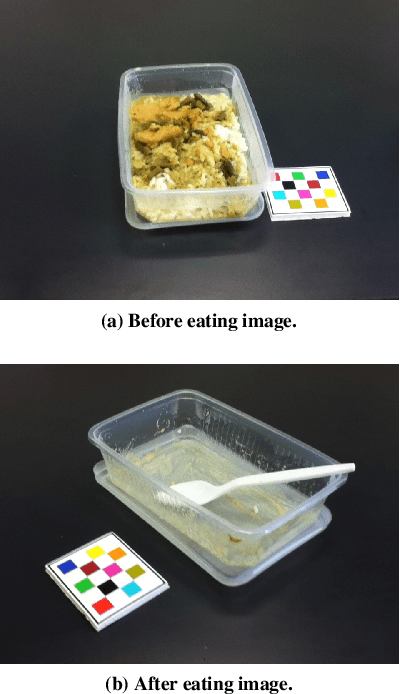
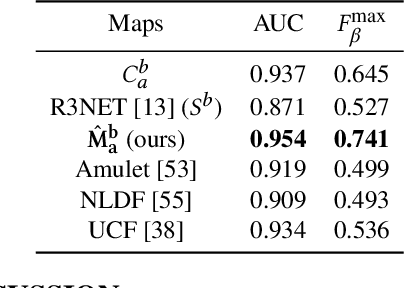
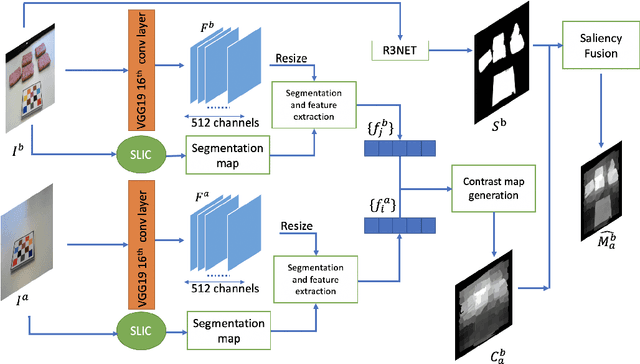
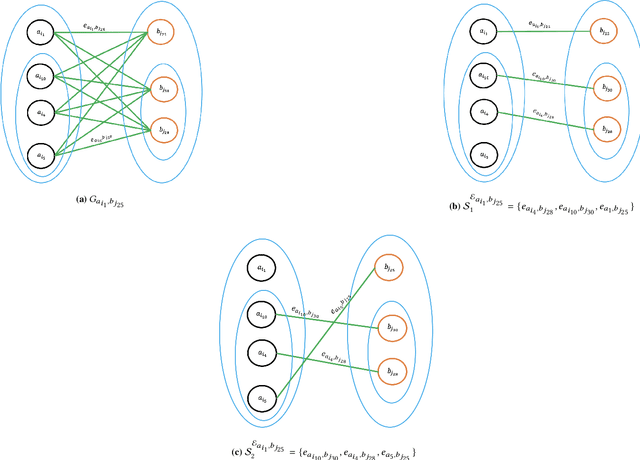
Abstract:Advances in image-based dietary assessment methods have allowed nutrition professionals and researchers to improve the accuracy of dietary assessment, where images of food consumed are captured using smartphones or wearable devices. These images are then analyzed using computer vision methods to estimate energy and nutrition content of the foods. Food image segmentation, which determines the regions in an image where foods are located, plays an important role in this process. Current methods are data dependent, thus cannot generalize well for different food types. To address this problem, we propose a class-agnostic food image segmentation method. Our method uses a pair of eating scene images, one before start eating and one after eating is completed. Using information from both the before and after eating images, we can segment food images by finding the salient missing objects without any prior information about the food class. We model a paradigm of top down saliency which guides the attention of the human visual system (HVS) based on a task to find the salient missing objects in a pair of images. Our method is validated on food images collected from a dietary study which showed promising results.
An End-to-End Food Image Analysis System
Feb 01, 2021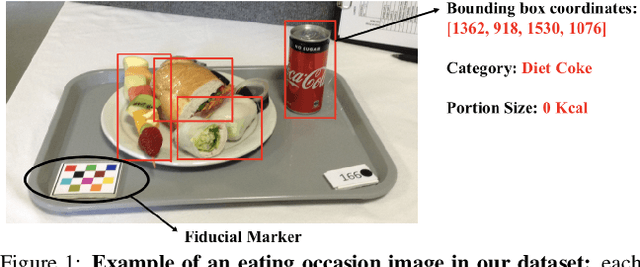



Abstract:Modern deep learning techniques have enabled advances in image-based dietary assessment such as food recognition and food portion size estimation. Valuable information on the types of foods and the amount consumed are crucial for prevention of many chronic diseases. However, existing methods for automated image-based food analysis are neither end-to-end nor are capable of processing multiple tasks (e.g., recognition and portion estimation) together, making it difficult to apply to real life applications. In this paper, we propose an image-based food analysis framework that integrates food localization, classification and portion size estimation. Our proposed framework is end-to-end, i.e., the input can be an arbitrary food image containing multiple food items and our system can localize each single food item with its corresponding predicted food type and portion size. We also improve the single food portion estimation by consolidating localization results with a food energy distribution map obtained by conditional GAN to generate a four-channel RGB-Distribution image. Our end-to-end framework is evaluated on a real life food image dataset collected from a nutrition feeding study.
Learning eating environments through scene clustering
Nov 10, 2019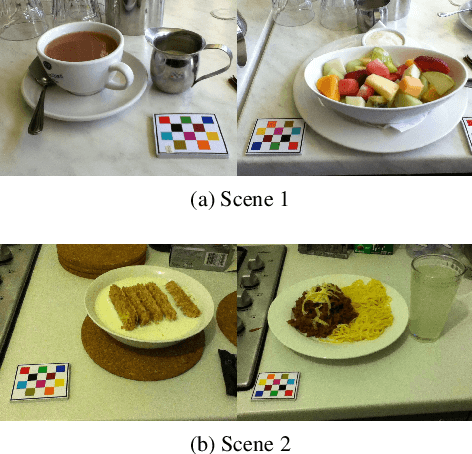
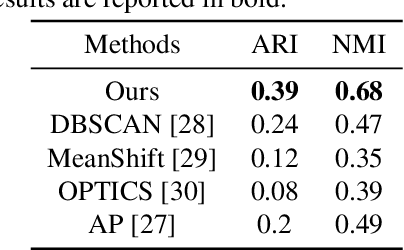
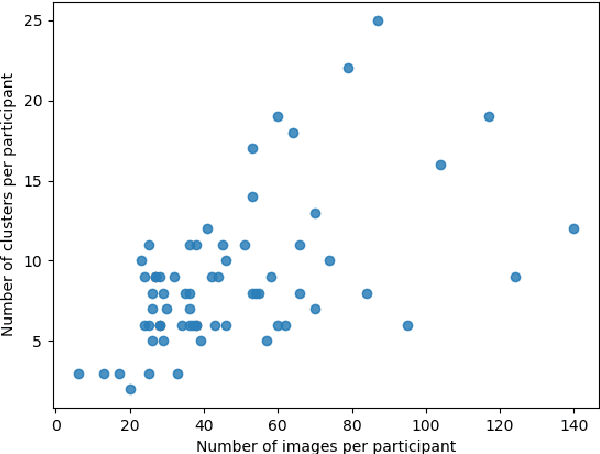
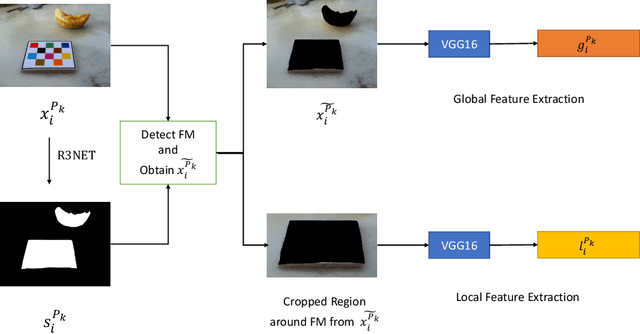
Abstract:It is well known that dietary habits have a significant influence on health. While many studies have been conducted to understand this relationship, little is known about the relationship between eating environments and health. Yet researchers and health agencies around the world have recognized the eating environment as a promising context for improving diet and health. In this paper, we propose an image clustering method to automatically extract the eating environments from eating occasion images captured during a community dwelling dietary study. Specifically, we are interested in learning how many different environments an individual consumes food in. Our method clusters images by extracting features at both global and local scales using a deep neural network. The variation in the number of clusters and images captured by different individual makes this a very challenging problem. Experimental results show that our method performs significantly better compared to several existing clustering approaches.
Single-View Food Portion Estimation: Learning Image-to-Energy Mappings Using Generative Adversarial Networks
May 23, 2018

Abstract:Due to the growing concern of chronic diseases and other health problems related to diet, there is a need to develop accurate methods to estimate an individual's food and energy intake. Measuring accurate dietary intake is an open research problem. In particular, accurate food portion estimation is challenging since the process of food preparation and consumption impose large variations on food shapes and appearances. In this paper, we present a food portion estimation method to estimate food energy (kilocalories) from food images using Generative Adversarial Networks (GAN). We introduce the concept of an "energy distribution" for each food image. To train the GAN, we design a food image dataset based on ground truth food labels and segmentation masks for each food image as well as energy information associated with the food image. Our goal is to learn the mapping of the food image to the food energy. We can then estimate food energy based on the energy distribution. We show that an average energy estimation error rate of 10.89% can be obtained by learning the image-to-energy mapping.
 Add to Chrome
Add to Chrome Add to Firefox
Add to Firefox Add to Edge
Add to Edge